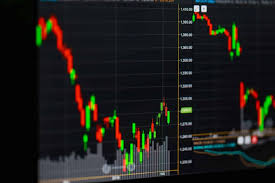- VietTAS Hotline: 0918516181
Experience the Thrill of Casumo Online Casino in the UK
30 October, 2025Mexboss Casino Tu Destino de Entretenimiento en Línea
30 October, 2025The Essential Guide to Forex Trading Charts for Beginners

The Essential Guide to Forex Trading Charts for Beginners
Understanding forex trading charts is crucial for any trader who wants to succeed in the currency exchange market. Charts provide valuable visual insights into price movements and trends, allowing traders to make informed decisions. Regardless of your experience level, mastering these charts can significantly enhance your trading strategy. As you navigate the complexities of the forex market, it’s essential to familiarize yourself with the different types of charts, the key components they feature, and how to interpret them effectively. For more resources and information, you may visit forex trading charts https://forex-exregister.com/.
1. Types of Forex Trading Charts
There are three primary types of forex trading charts: line charts, bar charts, and candlestick charts. Each type offers a unique perspective on market movements and can be advantageous in different trading scenarios.
1.1 Line Charts
Line charts are the simplest form of charting. They display the closing prices of currency pairs over a specified period, connecting each point with a straight line. This simplicity is appealing to new traders who can quickly understand the general direction of price movement. However, line charts do not provide detailed information about price fluctuations, making them less useful for in-depth analysis.
1.2 Bar Charts
Bar charts provide more information than line charts. Each bar represents a specific time period (e.g., 1 minute, 1 hour, 1 day) and displays the open, high, low, and close prices within that timeframe. The vertical line indicates the price range (high and low), while the horizontal lines on the left and right indicate the opening and closing prices, respectively. This format allows traders to see price volatility and assess market strength more effectively.
1.3 Candlestick Charts
Candlestick charts are the most popular among forex traders due to their comprehensive information presentation. Like bar charts, each candlestick represents a specific time period’s open, high, low, and close prices. However, candlesticks are visually more appealing and easier to read. They also provide information about market sentiment through color coding: a green (or white) candle indicates upward movement, while a red (or black) candle indicates downward movement. Moreover, candlestick patterns can signal market reversals or continuations, making them a crucial element in technical analysis.
2. Understanding Chart Components
To effectively use forex trading charts, it’s essential to understand their components, including the timeframes, price scales, and indicators.
2.1 Timeframes
Timeframes refer to the duration of the data represented on the chart. Common timeframes include 1-minute, 5-minute, 15-minute, hourly, daily, and weekly. Shorter timeframes can provide instant trading opportunities, but they tend to be more volatile. Conversely, longer timeframes provide clearer trends but may delay entry and exit signals. Finding the right timeframe depends on your trading strategy, whether you are a scalper, day trader, or swing trader.
2.2 Price Scale
The price scale is typically displayed on the right side of the chart, illustrating the prices of the currency pairs. Some charts allow for a linear scale, while others provide a logarithmic scale, which is particularly useful for identifying percentage changes over time. Understanding how to read the price scale is vital for assessing potential entry and exit points in the market.
2.3 Indicators
Indicators are mathematical calculations based on price and volume data that help traders interpret market conditions. Popular indicators include moving averages, Relative Strength Index (RSI), Bollinger Bands, and MACD (Moving Average Convergence Divergence). Incorporating indicators into your trading strategy can assist in spotting trends and potential reversal points, ultimately improving your decision-making process.

3. Analyzing Forex Trading Charts
Analyzing forex trading charts is a skill that takes time to develop. Here are some tips to improve your analytical skills:
3.1 Trend Analysis
Identifying trends is critical. Look for upward (bullish) and downward (bearish) trends, as well as sideways movements (consolidation). Drawing trend lines can help visualize the market direction and, in turn, allow you to make informed trading decisions.
3.2 Support and Resistance Levels
Support and resistance levels are crucial concepts in technical analysis. Support levels indicate where the price tends to stop falling, while resistance levels indicate where the price often ceases to rise. Recognizing these levels can help traders place their trades effectively and set realistic profit targets.
3.3 Chart Patterns
Familiarize yourself with common chart patterns—such as head and shoulders, triangles, and flags—as they can provide early signals for potential market reversals or continuations. Understanding these patterns will bolster your confidence in making trading decisions.
4. Strategies for Trading with Charts
There’s no one-size-fits-all strategy when it comes to trading forex with charts. However, here are a few effective strategies to consider:
4.1 Trend Following
Trend following strategies are based on the idea that prices move in trends. Traders can use indicators like moving averages to confirm the direction of the trend and enter positions that align with it.
4.2 Breakout Trading
Breakout trading involves initiating trades when the price breaks through identified support or resistance levels. This strategy can lead to significant profits if executed correctly, as breakouts often lead to strong price movements.
4.3 Reversal Trading
Reversal trading focuses on identifying points where the price might change direction. Traders look for candlestick patterns or other signals indicating a potential reversal to enter trades in the opposite direction.
5. Conclusion
Learning to read and analyze forex trading charts is an essential skill for any forex trader. By understanding the different types of charts, key components, and effective trading strategies, you can enhance your trading performance and increase your chances of success in the forex market. Remember to practice regularly and analyze past trades to continue improving your skills. With time and experience, you will develop a keen ability to interpret price movements and make informed trading decisions. Happy trading!
